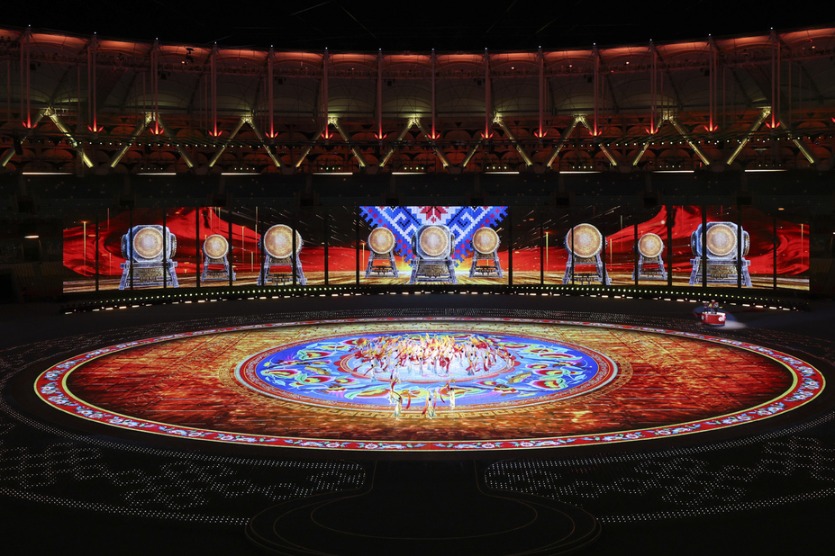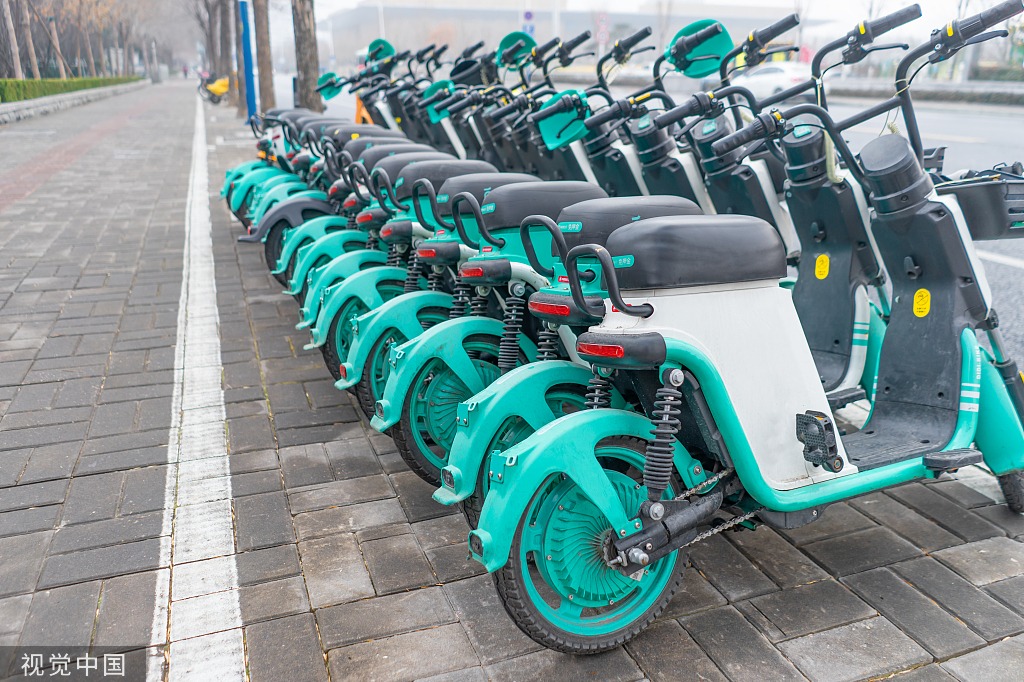Shanghai's efforts to save Jews during WWII retold
By MINLU ZHANG in New York | China Daily | Updated: 2023-08-04 07:29

Survivors, their descendants attend NY exhibit, sharing warmth from Chinese
In 1939, the Kracho family was trying to escape Nazi Germany and found themselves at a travel agency. The man said he had just had a cancellation and had 16 extra tickets. Mr Kracho asked, "16 tickets to where?" The man replied, "Shanghai, China."
They bought the tickets. And in March of that year, 16 members of the Kracho family boarded a German ocean liner and set out on an eight-week journey to Shanghai.
"A different country, a different world, different culture, language, different food, weather, everything. Totally, totally different," said Ellen Kracho, who was born in Shanghai during World War II and grew up in New York.
Elizabeth Grebenschikoff's grandfather, on the other hand, managed to get out because he bribed the shipping agent. Her grandfather was turned down the first time he asked for four visas.
However, he went back with the same paperwork and said, "Take another look." Hidden between the pages was money. He eventually secured passage on a shipping line from Naples, Italy, to Shanghai.
During 1933-41, more than 20,000 stateless Jews fled to Shanghai to escape the Holocaust, as the city was among the few places that Jewish refugees were guaranteed acceptance, said Huang Ping, Chinese consul general in New York. He spoke on Tuesday at the opening ceremony of an exhibition on refugees in downtown Manhattan.
Some of the survivors and their descendants shared their family stories at the exhibition titled Shanghai, Homeland Once Upon a Time — Jewish Refugees and Shanghai.
The exhibition is organized by the Shanghai People's Association for Friendship with Foreign Countries and managed by the Shanghai Jewish Refugees Museum at 28 Liberty Street in Fosun Plaza. It showcases more than 200 photographs and approximately 30 pieces of replica memorabilia and will last until Aug 14. It also features videos and personal stories from Jewish refugees in China and their descendants.
In the summer of 1938, delegates from 32 countries met in France, and most countries, including the United States and the United Kingdom, decided not to take in more Jewish refugees.
It was during that time that Rabbi Arthur Schneier, now 93 and a Holocaust survivor, first encountered a Chinese diplomat who issued thousands of visas. "Many of you, and many of your parents, survived because of this hero," he said. "My family, except for my mother and I, ended up in Auschwitz, never to be seen alive."
Ho Feng-shan was the consul general of the Republic of China in Vienna from 1938 to 1940. He managed to issue numerous visas to Jews seeking to escape Austria after the Anschluss, the German annexation of Austria.
With his help, about 2,000 Jewish refugees managed to flee Austria to Shanghai and other places. The visas were known as "visas for life".
Jerry Lindenstraus and his father were among the German Jewish refugees who fled to Shanghai during that time.
Lindenstraus, born in Germany in 1929, had a good life until 1938. "I don't know how my father and people figured out there was one place in the world where he could go to, and that was Shanghai," he said.
Just like that, young Lindenstraus followed his father and boarded one of the last German ships to Shanghai in 1939. He then lived in Shanghai for seven and a half years.
Wonderful cooperation
"Eighteen thousand. I want to repeat, 18,000 German and Austrian Jewish refugees came to Shanghai between 1938 and 1941, more than any other country in the world," said Lindenstraus, who is now 94.
Lindenstraus and his father did not know what happened in Europe during the Holocaust, where 6 million Jews across Europe were murdered. Lindenstraus told his grandchildren that if he and his dad had not gone to Shanghai, he wouldn't be here today.
As the war went on, the Japanese occupied Shanghai. Elizabeth Grebenschikoff said her family lived in a Hongkou ghetto with Chinese, Japanese, Indians and other refugees from Germany and Austria. Shanghai saw 1,000 monthly refugee arrivals, and Hongkou residents faced dire conditions since the war in China in 1937, according to the Shanghai Jewish Museum.
There were no bomb shelters in the ghetto, Grebenschikoff said. "It was a very tough situation, but there was wonderful cooperation between the very poor Chinese in that district and the Jewish refugees."
It has been estimated that during World War II, more than 400 Jewish babies were born in Shanghai. The babies were called "Shanghai Babies". Ellen Kracho is one of them.
Kracho was born in Shanghai in 1947. Her birth certificate says "place of origin: Stateless".Her family lived in Shanghai for 10 years, and then they lived in Israel for about three years while they were waiting for the paperwork to go to the US.
Kracho and her husband are now great-grandparents. They have two children, five grandchildren, and their oldest granddaughter has a little boy going on 1-year-old.
"I want to say to the Chinese people who took us in, in Shanghai. Thank you," Kracho said at the ceremony. "If it wasn't for them, we wouldn't be here. I wouldn't be here. Thank you very, very much."
"There are many factors that draw Jews and Chinese together. Natural affinity and similarities make us understand the other side quite easily. But more importantly, we both respect diversity and appreciate the beauty of differences. We also learn from history that dialogue and exchange can reduce human suffering and contribute to people's welfare. We know that as residents of planet Earth, we need unison, not division," Consul General Huang said.
"By honoring the victims of the Holocaust and sharing the stories of its survivors, this wonderful institution fosters dialogue, promotes tolerance and inspires hope for the future. I applaud everyone associated with bringing this compelling exhibit to our global city," New York City Mayor Eric Adams said in a written letter to the exhibition.
The exhibit is one of several cultural programs and collaborative initiatives between individuals and organizations from the US and China in the coming months.
Film premiere in LA
A documentary recalling the stories of Jewish performers and composers active in Shanghai from the 1920s to the 1940s, titled Jewish Melodies Left in Shanghai, had its film premiere on Saturday in Los Angeles.
The documentary uses music to reflect the kindness and tolerance that never disappear in difficult times and to showcase the convergence and development of Eastern and Western cultures in Shanghai.
About 200 guests were invited to attend the premiere.
The documentary focused on several top Jewish musicians who called Shanghai home then, including composer Aaron Avshalomov, violinist and conductor Arrigo Foa, composer Ernest Bloch, and others.
David Avshalomov, the grandson of Aaron Avshalomov, said the premiere was an honor for his revered grandfather. "My grandfather loved the Chinese people and their music and devoted his life to composing classical music that honored both Chinese and Western cultural traditions."
At the premiere, Jade Ellis, an IT executive who had lived with his family in Shanghai's modern Jewish community for six years, shared his experience, hoping to revisit their memories of Shanghai through the film.
"When we saw in the Shanghai Jewish Refugees Museum all the Jews who were saved by Shanghai during that period, I think that was a very positive, meaningful thing."
The film was produced jointly by the Shanghai People's Association for Friendship with Foreign Countries and the SMG Documentary Center. It was also invited to participate in the China-US film festival screening in November this year.
Xinhua contributed to this story.
























